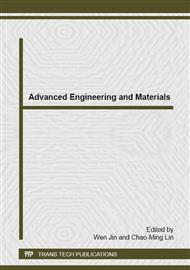p.71
p.76
p.82
p.89
p.96
p.109
p.113
p.118
p.124
Optimization of Drilling Process Parameters for Minimizing Surface Roughness in Carbon-Carbon Composite Materials
Abstract:
The Carbon-Carbon composites are nothing but the composites, in which Carbon Fibres are reinforced into a Carbon Matrix. The usage of Carbon-Carbon composite materials is gaining the significant position in the fabrication of Missiles, Space Shuttles and other advanced structures. These materials are primarily expensive in nature, and the drilling cost of these materials will increase the manufacturing cost of the final product. Hence care should be taken in drilling of these materials. The cutting process parameters should be chosen carefully to minimize the damage and improve the quality of the hole drilled. Surface roughness is the most serious problem in the drilling process of Carbon-Carbon composites. This paper discusses the comprehensive analysis of surface finish and the influence of various process parameters as spindle speed, feed rate and drill bit point angle on the surface finish of the drilled holes. These experiments were carried out on a CNC drilling machine at Anna university campus, Chennai, India. The drilling of Carbon-Carbon composite material has been done by using three different drill bit materials i.e. TiN coated carbide, Solid carbide and High Speed Steel tools with three different point angles. The Analysis of variance technique is used to study the significance of each process parameter on the performance characteristic surface roughness. A L27 orthogonal array is employed to study the influence of process parameters. This paper also presents the comparison of the surface roughness values of drilled holes obtained by using the three different tool materials.
Info:
Periodical:
Pages:
96-105
Citation:
Online since:
December 2014
Authors:
Price:
Сopyright:
© 2015 Trans Tech Publications Ltd. All Rights Reserved
Share:
Citation:


